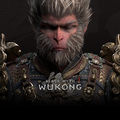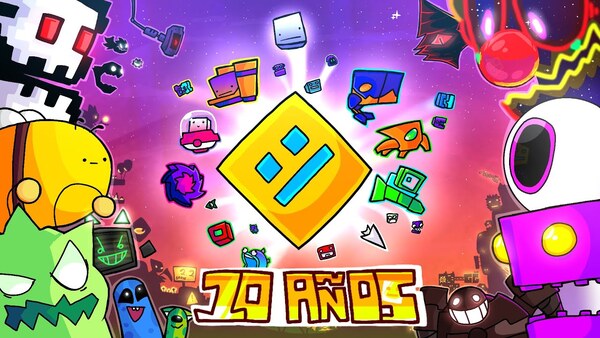Black Myth: Wukong – A Legendary Rebirth of Chinese Mythology in Gaming
Meta Description:
Black Myth: Wukong is one of the most anticipated action RPGs of the decade, blending Chinese mythology, next-gen visuals, and intense Soulslike combat. Explore the full journey of its development, gameplay, and future potential in this in-depth guide.
Few games have shaken the global gaming community like Black Myth: Wukong. Developed by Game Science, this action RPG is a retelling of the legendary Chinese epic "Journey to the West", placing players in the role of the Monkey King in a rich, dark fantasy world. The game has captivated millions with its jaw-dropping trailers, sophisticated combat, and deeply cultural aesthetic.
This article offers a full exploration of the game’s origins, development journey, gameplay mechanics, narrative depth, visual design, mythological inspirations, and the community hype that surrounds it.
The Origins of Black Myth: Wukong
The story of Black Myth: Wukong began in 2020, when an independent Chinese studio, Game Science, released a 13-minute gameplay demo showcasing a Soulslike action game inspired by Chinese legends. It was raw, thrilling, and unexpected. That one demo generated over 10 million views within days, making it the first major Chinese-developed action RPG to capture global attention on that scale.
Game Science, founded by ex-Tencent developers, had previously focused on mobile and online titles. But Black Myth marked a turning point — a bold move into AAA game development fueled by a passion for storytelling, martial arts, and mythology.
The developers made it clear: they wanted to create a game that both honored Chinese cultural heritage and matched the technical excellence of top-tier Western studios.
Reimagining Journey to the West
At the heart of the game is the legendary tale Journey to the West, a novel from the 16th century that has inspired countless adaptations in literature, film, anime, and games. But Black Myth offers a darker, more mature take, rooted in philosophical themes and the hero’s internal struggles.
You play as Sun Wukong, the Monkey King, a mythical figure born from stone, armed with shapeshifting powers, divine strength, and a rebellious nature. In this retelling, however, Wukong is not just a cocky trickster — he’s a conflicted, burdened warrior navigating a world full of monstrous gods, spiritual trials, and betrayal.
The story appears to weave surreal dream sequences, cryptic dialogue, and multi-layered timelines. Rather than following a linear narrative, it embraces ambiguity and mythic scale, pulling players into a deeper symbolic experience.
Combat System and Gameplay Mechanics
Gameplay in Black Myth: Wukong is heavily influenced by the Soulsborne genre — think Dark Souls, Sekiro, and Elden Ring. It demands patience, precision, and mastery. Players can expect deliberate combat pacing, punishing bosses, and a steep learning curve.
Wukong is equipped with his signature staff, which can transform in size and function. Players will also unlock mystical abilities such as summoning clones, transforming into animals, and activating magical bursts to break enemy patterns.
What sets the combat apart is its dynamic nature. Every boss fight introduces new mechanics — shifting arenas, illusions, time-warping effects — that require constant adaptation. Blocking and dodging are critical, and attack timing can determine life or death.
The game also features skill trees, item crafting, and gear upgrades, but the focus remains on combat fluency and mental focus rather than grinding.
Mythological Beasts and Worldbuilding
Black Myth creates a fantastical universe drawn from Chinese folklore, filled with demons, gods, immortals, and spirits. Every creature has lore, symbolism, and context behind it. You may face a giant spider spirit who embodies temptation or a tiger-headed general guarding a celestial gate.
Each environment is handcrafted with mythical symbolism: icy peaks where dragon spirits slumber, corrupted temples soaked in blood-red fog, and haunted bamboo forests where the wind carries whispers of ancient monks.
These areas are not only beautiful but designed with verticality and exploration in mind. Hidden paths, cursed artifacts, and puzzle mechanisms are integrated organically, rewarding players who explore carefully.
Technical Innovation and Unreal Engine 5
Black Myth: Wukong is developed on Unreal Engine 5, giving it one of the most visually advanced presentations of any upcoming title. The level of detail in character animation, weather effects, lighting, and particle systems is nothing short of next-gen.
Hair physics on Wukong’s fur, dynamic snowfall that affects movement, and real-time ray-traced lighting all combine to create a cinematic feel. Game Science’s small but passionate team has pushed the engine to its limits, rivaling much larger AAA developers.
Performance remains a concern for lower-end systems, but optimization work has shown promising results. The game is planned for PC and next-gen consoles, with potential support for Nvidia DLSS and AMD FSR to improve frame rates.
Cultural Depth and Language
What distinguishes Black Myth from other fantasy games is its deeply embedded Chinese identity. The game uses classical Chinese literature, Daoist symbolism, Buddhist philosophy, and traditional folklore not just as decoration, but as core narrative elements.
Voice acting in Mandarin adds emotional weight and authenticity, with carefully written dialogue reflecting the poetic, introspective tone of the original text. Subtitles and translations aim to preserve this nuance for global players, avoiding the simplifications seen in some Western localizations of Asian media.
Cultural scholars have praised the game for not compromising its identity to cater to foreign markets, while still achieving universal resonance through storytelling and visual design.
Player Reception and Global Anticipation
Since its reveal, Black Myth has developed a massive global following. Western fans are excited about a non-Western mythology in a Soulslike framework. Chinese players see it as a proud moment — a title that can stand alongside the best of FromSoftware, Capcom, or Santa Monica Studio.
Social media buzz, YouTube trailers, and gameplay analysis videos have all contributed to the hype. Fan art, cosplays, lore discussions, and gameplay breakdowns have formed around every piece of new footage. It’s a game that unites both casual fans and hardcore theorycrafters.
The developers have responded by increasing transparency — sharing tech showcases, behind-the-scenes videos, and quarterly development updates. This open dialogue has earned trust in a space where hype often leads to disappointment.
Challenges and Delays
While excitement is high, Black Myth’s development has not been without issues. Game Science faced scaling challenges as it grew from a small indie team to a studio expected to deliver a AAA blockbuster. Hiring, localization, bug testing, and narrative development have required far more resources than originally planned.
Early delays were announced to rework key systems and switch to Unreal Engine 5. While frustrating for fans, these delays likely improved the overall quality and scope of the game.
Additionally, expectations are enormous. Living up to the hype while preserving creative integrity is a rare balance. Game Science has stated they will delay again if needed to meet their own standards rather than rush to release.
Soundtrack and Audio Atmosphere
Music in Black Myth is inspired by traditional Chinese instruments and opera, mixed with cinematic orchestration. The result is a haunting, emotional soundscape that shifts with the environment and story progression.
Wind instruments, guzheng, drums, and choral chants echo through battlefields and temples. Each boss has a unique battle theme, crafted to match the lore and mood of the encounter. These are not generic background tracks — they elevate the drama of each moment.
Ambient audio also plays a large role. You’ll hear distant gongs, prayer chants, and shifting winds as you explore. These sounds immerse you in the world and signal nearby threats or puzzles.
The Future of Chinese AAA Development
Black Myth: Wukong may be the beginning of a wave of high-caliber Chinese titles entering the global scene. It proves that narrative ambition, technical polish, and mythic storytelling can emerge from beyond the traditional gaming hubs.
Game Science has already hinted at future projects, including additional titles set in Chinese epics. If Black Myth succeeds critically and commercially, it could open doors for more studios in Asia to explore their roots and bring diverse perspectives to mainstream gaming.
The impact will not just be cultural, but structural. A win for Black Myth is a win for innovation, global storytelling, and a broader view of what games can be.
Final Verdict:
Black Myth: Wukong is more than a game — it's a statement. A symbol of cultural pride, technological excellence, and narrative ambition. If Game Science can deliver on its promise, we may be looking at a genre-defining classic that will echo across the industry for years to come.






























